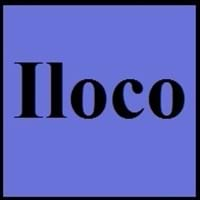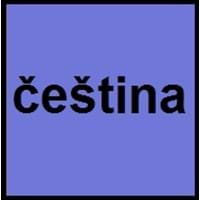Ilocano and Czech
Countries
Philippines
Czech Republic, European Union
National Language
Philippines
Czech Republic
Second Language
Not spoken in any of the countries
Not spoken in any of the countries
Speaking Continents
Asia
Europe
Minority Language
Not spoken in any of the countries
Austria, Croatia, Germany, Slovakia
Regulated By
Commission on the Filipino Language
Institute of the Czech Language
Interesting Facts
- Ilocano was originally written with Baybayin syllabary, then gradually it was replaced by Latin alphabet.
- Northwest Luzon is the original Ilocano homeland.
- The Czech language was known as Bohemian as early at 19th century.
- In czech language, there are many words that do not contain vowels.
Similar To
Tagalog, Indonesian and Malaysian Languages
Polish, Slovak and Sorbian
Derived From
Not Available
Not Available
Alphabets in
Ilocano-Alphabets.jpg#200
Czech-Alphabets.jpg#200
Scripts
Ilokano Braille, Latin
Latin
Writing Direction
Not Available
Left-To-Right, Horizontal
Time Taken to Learn
Not Available
Thank You
Agyamanak
děkuji
How Are You?
Kumusta?
Jak se máš?
Good Night
Naimbag a rabii
dobrou noc
Good Evening
Naimbag a sardam
dobrý večer
Good Afternoon
Naimbag a malem
dobré odpoledne
Good Morning
Naimbag a bigat
dobré ráno
Please
Not available
prosím
Sorry
Agpakawanak
litovat
I Love You
Ayayatenka
Miluji tě
Excuse Me
Maawan-dayawen
promiňte
Where They Speak
Philippines
Chodsko, Bohemia
How Many People Speak
Not Available
Where They Speak
Philippines
Czech Silesia, Hlucin, Northeast Moravia
How Many People Speak
Not Available
Dialect 3
Not present
Moravian
Where They Speak
Not present
Czech Republic, Czech Silesia, Moravia, Slovakia
How Many People Speak
Not Available
Native Name
ilokano
čeština / český jazyk
Alternative Names
Ilokano, Iloko
Bohemian, Cestina
French Name
ilocano
tchèque
German Name
Ilokano-Sprache
Tschechisch
Pronunciation
Not Available
Not Available
Ethnicity
Ilocano people
Czechs
Origin
18th Century
9th Century
Language Family
Austronesian Family
Indo-European Family
Subgroup
Not Available
Slavic
Branch
Not Available
Western
Early Forms
No early forms
Proto-Czech, Old Czech
Standard Forms
Modern Ilocano
Standard Czech
Signed Forms
Not Available
Czech Sign Language
Scope
Individual
Individual
ISO 639 1
No data available
cs
ISO 639 6
Not Available
Not Available
Glottocode
ilok1237
czec1258
Linguasphere
31-CBA-a
53-AAA-da
Language Type
Living
Living
Language Linguistic Typology
Not Available
Not Available
Language Morphological Typology
Not Available
Fusional, Synthetic
All Ilocano and Czech Dialects
Most languages have dialects where each dialect differ from other dialect with respect to grammar and vocabulary. Here you will get to know all Ilocano and Czech dialects. Various dialects of Ilocano and Czech language differ in their pronunciations and words. Dialects of Ilocano are spoken in different Ilocano Speaking Countries whereas Czech Dialects are spoken in different Czech speaking countries. Also the number of people speaking Ilocano vs Czech Dialects varies from few thousands to many millions. Some of the Ilocano dialects include: Balangao, Bontoc. Czech dialects include: Chod , Lach. Also learn about dialects in South American Languages and North American Languages.
Ilocano and Czech Speaking population
Ilocano and Czech speaking population is one of the factors based on which Ilocano and Czech languages can be compared. The total count of Ilocano and Czech Speaking population in percentage is also given. The percentage of people speaking Ilocano language is 0.14 % whereas the percentage of people speaking Czech language is 0.15 %. When we compare the speaking population of any two languages we get to know which of two languages is more popular. Find more details about how many people speak Ilocano and Czech on Ilocano vs Czech where you will get native speakers, speaking population in percentage and native names.
Ilocano and Czech Language Codes
Ilocano and Czech language codes are used in those applications where using language names are tedious. Ilocano and Czech Language Codes include all the international language codes, glottocodes and linguasphere.





